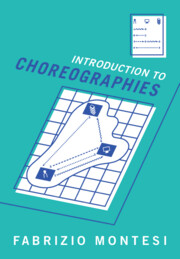13 results
Moments to remember: The impact of mediated memory work on live event experiences
- Part of
-
- Journal:
- Memory, Mind & Media / Volume 3 / 2024
- Published online by Cambridge University Press:
- 17 January 2025, e26
-
- Article
-
- You have access
- Open access
- HTML
- Export citation
Chapter 3 - Experiments in Surtitling
- from Part I - Translation as Medium and Method
-
-
- Book:
- Performance and Translation in a Global Age
- Published online:
- 10 August 2023
- Print publication:
- 29 June 2023, pp 64-86
-
- Chapter
- Export citation
3 - Simple Processes
- from Part I - Foundations
-
- Book:
- Introduction to Choreographies
- Published online:
- 11 May 2023
- Print publication:
- 25 May 2023, pp 55-75
-
- Chapter
- Export citation
8 - Properties of Choreographies and Endpoint Projection
- from Part II - Computation
-
- Book:
- Introduction to Choreographies
- Published online:
- 11 May 2023
- Print publication:
- 25 May 2023, pp 156-176
-
- Chapter
- Export citation

Introduction to Choreographies
-
- Published online:
- 11 May 2023
- Print publication:
- 25 May 2023
Chapter 1 - Music, Memory, and the (Ancient Greek) Imagination
- from Part I - Approaching Music and Memory
-
-
- Book:
- Music and Memory in the Ancient Greek and Roman Worlds
- Published online:
- 14 October 2021
- Print publication:
- 28 October 2021, pp 25-62
-
- Chapter
- Export citation
Chapter 1 - Liveness, Documentation, and the RSC’s Dreams, 1954–1977
- from Part I - Photographing Performers
-
- Book:
- Still Shakespeare and the Photography of Performance
- Published online:
- 05 December 2019
- Print publication:
- 19 December 2019, pp 21-66
-
- Chapter
- Export citation

Still Shakespeare and the Photography of Performance
-
- Published online:
- 05 December 2019
- Print publication:
- 19 December 2019
7 - Rethinking Liveness in the Digital Age
-
-
- Book:
- The Cambridge Companion to Music in Digital Culture
- Published online:
- 30 August 2019
- Print publication:
- 19 September 2019, pp 178-192
-
- Chapter
- Export citation
Part XX - Changing Technologies of Stage Performance
-
-
- Book:
- The Cambridge Guide to the Worlds of Shakespeare
- Published online:
- 17 August 2019
- Print publication:
- 21 January 2016, pp 1417-1482
-
- Chapter
- Export citation
270 - TV and Early TV Audiences in Europe and the United States
- from Part XXVIII - Shakespeare and Media History
-
-
- Book:
- The Cambridge Guide to the Worlds of Shakespeare
- Published online:
- 17 August 2019
- Print publication:
- 21 January 2016, pp 1930-1935
-
- Chapter
- Export citation
202 - Visual Projections
- from Part XX - Changing Technologies of Stage Performance
-
-
- Book:
- The Cambridge Guide to the Worlds of Shakespeare
- Published online:
- 17 August 2019
- Print publication:
- 21 January 2016, pp 1467-1474
-
- Chapter
- Export citation
Part XXVIII - Shakespeare and Media History
-
-
- Book:
- The Cambridge Guide to the Worlds of Shakespeare
- Published online:
- 17 August 2019
- Print publication:
- 21 January 2016, pp 1907-1974
-
- Chapter
- Export citation

